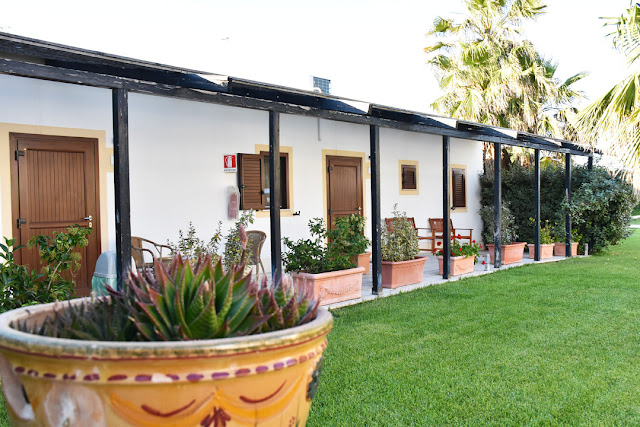The shore of Chiatona, the seaside of Massafra, where crystal clear sea and soft and white sand have always been the summer background of the people of Massafra.
In the
blogpost about the itinerary where I suggested what to see in Massafra, someone
made me notice that I hadn’t talked about the beach. Infact, being Massafra
known more for its ravines, not everyone knows that the beach is actually not
more than 15 minute far. So, here I am to fix my absent-mindedness and to talk
to you about Chiatona, the seaside of the people of Massafra.
Chiatona, the seaside of the people of Massafra and my adolescence
We took the
bus hoping to find four seats together, surrounded by the voices of many other
guys like us; we reached Chiatona station, we got off, slippers on our feet, a
bag with a beach towel on our back and we reached Lido Impero, the seaside meeting
point of the whole town. (Note: time passes but the fact that the people of
Massafra meet in Chiatona remains a constant!)
Lido Impero, the historic beach club of Chiatona
Lido Impero
is a historic beach resort. It dates back to the 30s, when the guests came here
even from Taranto by rail-cruiser, got off at the railroad crossing right in
front of the entrance of the resort and enjoyed this sea.
Back then,
bathers had their own changing room with a mirror and all they needed. There
are some old pictures hanging on the walls of the current resort that recall
that time. Unfortunately, war arrived here too and both foreign and Italian
soldiers used it as a headquarter, forcing even the owners to leave the shore.
After the
war, Lido Impero got back to life, not without any difficulties to rebuild and
to equip again the structure and still nowadays it welcomes its guests and
offers its services.
Lido Impero, not just a beach resort
When I was
a teenager, I had always experienced Lido Impero as a bather: I used a beach
umbrella, the access to the beach, beach volleyball courts where we played ruthless
matches with old and new friends met at the moment, and then we had an
ice-cream or a slush at the bar.
But this historic
beach resort doesn’t offer just a day on the beach. Actually, It has a wide
restaurant that becomes a pizzeria in
the evening for those who want to spend a quiet evening by the sea. Moreover,
for those who want to sleep and to wake up sea view, the structure provides
fifteen rooms accessible from the elegant garden that frames the entrance.
Chiatona shore, the beach
Ok, but
let’s see the crucial points, that that maybe you’re waiting for since the
beginning of the blogpost. How’s the beach? Whom would I recommend it to?
Let’s begin
with saying that it’s a stretch of soft, fine, white sand, without a shadow of
a rock. It’s that kind of beach where you can spread the towel and model the
sand under it to adapt it to the shape of your body (and, in that case, be careful
not to fall asleep under the sun. Trust me, it happens...); a beach where, as I
said before, you can play beach volleyball and daringly throw yourself to hit
the ball.
It’s a
beach where children also can unleash their architectural creativity, digging
and building sand castles on the shoreline, without the danger to hurt themselves
with rocks.
Besides,
the level of water is the best for children who play in the sea, because you
must walk in the sea very far from the shore to reach an important high. This
characteristic, besides making this beach child proof, is also very much appreciated
by adults for the possibility to go for long, draining and massaging walks in
the water. A panacea for blood circulation!
The
seashore of Chiatona is known mostly by locals. It’s one of those beaches where
you really find the people of the place and those who aren’t often are locals
who have moved somewhere else, but during summer they come back here to enjoy a
holiday by the sea they have always known.
Did you
know that Massafra have its seaside? Have you ever heard of the seashore of
Chiatona?














Commenti
Posta un commento
Feel free to leave a comment!
I would be glad to know your opinion! ;)
Thank you! :)